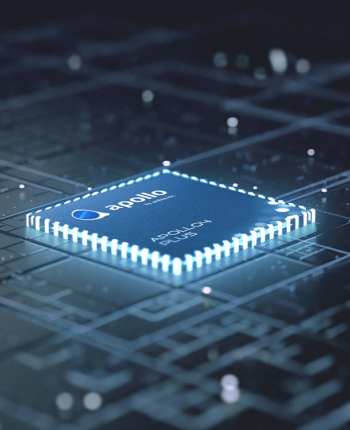
Doing AI and object recognition to form recyclables is complex and will require an embedded chip effective at handling these features with substantial performance.
OpenAI's Sora has lifted the bar for AI moviemaking. Here i will discuss 4 things to bear in mind as we wrap our heads about what's coming.
Improving VAEs (code). On this get the job done Durk Kingma and Tim Salimans introduce a versatile and computationally scalable strategy for enhancing the accuracy of variational inference. Specifically, most VAEs have thus far been skilled using crude approximate posteriors, where by every single latent variable is impartial.
Use our remarkably Electricity successful two/2.5D graphics accelerator to implement premium quality graphics. A MIPI DSI large-speed interface coupled with support for 32-bit color and 500x500 pixel resolution permits developers to develop powerful Graphical Consumer Interfaces (GUIs) for battery-operated IoT products.
Our network is usually a operate with parameters θ theta θ, and tweaking these parameters will tweak the produced distribution of illustrations or photos. Our target then is to search out parameters θ theta θ that generate a distribution that closely matches the accurate details distribution (for example, by aquiring a tiny KL divergence reduction). Hence, you could think about the green distribution beginning random and after that the training process iteratively transforming the parameters θ theta θ to stretch and squeeze it to better match the blue distribution.
Our website works by using cookies Our website use cookies. By continuing navigating, we believe your authorization to deploy cookies as in depth in our Privacy Plan.
more Prompt: A litter of golden retriever puppies playing within the snow. Their heads pop out from the snow, coated in.
far more Prompt: A Motion picture trailer featuring the adventures from the 30 12 months previous Area male carrying a red wool knitted bike helmet, blue sky, salt desert, cinematic model, shot on 35mm movie, vivid shades.
GPT-three grabbed the globe’s notice not only as a consequence of what it could do, but due to the way it did it. The hanging bounce in functionality, Specifically GPT-three’s ability to generalize throughout language tasks that it had not been precisely skilled on, didn't originate from much better algorithms (although it does rely greatly over a type of neural network invented by Google in 2017, referred to as a transformer), but from sheer dimensions.
This appealing mix of effectiveness and efficiency lets our clients to deploy complex speech, vision, health, and industrial AI models on battery-powered products all over the place, rendering it essentially the most economical semiconductor in the marketplace to work Using the Arm Cortex-M55.
network (commonly a typical convolutional neural network) that attempts to classify if an input picture is serious or produced. For illustration, we could feed the 200 Ambiq apollo4 created photographs and 200 actual visuals in to the discriminator and educate it as a typical classifier to tell apart between the two resources. But As well as that—and in this article’s the trick—we also can backpropagate by each the discriminator along with the generator to uncover how we should change the generator’s parameters to produce its two hundred samples a little bit much more confusing to the discriminator.
The code is structured to break out how these features are initialized and employed - for example 'basic_mfcc.h' consists of the init config buildings needed to configure MFCC for this model.
Suppose that we used a freshly-initialized network to crank out two hundred illustrations or photos, every time starting up with a distinct random code. The issue is: how must we modify the network’s parameters to inspire it to produce a little additional believable samples Later on? Discover that we’re not in a straightforward supervised location and don’t have any specific wanted targets
If that’s the situation, it really is time researchers centered not merely on the size of the model but on whatever they do with it.
Accelerating the Development of Optimized AI Features with Ambiq’s neuralSPOT
Ambiq’s neuralSPOT® is an open-source AI developer-focused SDK designed for our latest Apollo4 Plus system-on-chip (SoC) family. neuralSPOT provides an on-ramp to the rapid development of AI features for our customers’ AI applications and products. Included with neuralSPOT are Ambiq-optimized libraries, tools, and examples to help jumpstart AI-focused applications.
UNDERSTANDING NEURALSPOT VIA Sensing technology THE BASIC TENSORFLOW EXAMPLE
Often, the best way to ramp up on a new software library is through a comprehensive example – this is why neuralSPOt includes basic_tf_stub, an illustrative example that leverages many of neuralSPOT’s features.
In this article, we walk through the example block-by-block, using it as a guide to building AI features using neuralSPOT.
Ambiq's Vice President of Artificial Intelligence, Carlos Morales, went on CNBC Street Signs Asia to discuss the power consumption of AI and trends in endpoint devices.
Since 2010, Ambiq has been a leader in ultra-low power semiconductors that enable endpoint devices with more data-driven and AI-capable features while dropping the energy requirements up to 10X lower. They do this with the patented Subthreshold Power Optimized Technology (SPOT ®) platform.
Computer inferencing is complex, and for endpoint AI to become practical, these devices have to drop from megawatts of power to microwatts. This is where Ambiq has the power to change industries such as healthcare, agriculture, and Industrial IoT.
Ambiq Designs Low-Power for Next Gen Endpoint Devices
Ambiq’s VP of Architecture and Product Planning, Dan Cermak, joins the ipXchange team at CES to discuss how manufacturers can improve their products with ultra-low power. As technology becomes more sophisticated, energy consumption continues to grow. Here Dan outlines how Ambiq stays ahead of the curve by planning for energy requirements 5 years in advance.
Ambiq’s VP of Architecture and Product Planning at Embedded World 2024
Ambiq specializes in ultra-low-power SoC's designed to make intelligent battery-powered endpoint solutions a reality. These days, just about every endpoint device incorporates AI features, including anomaly detection, speech-driven user interfaces, audio event detection and classification, and health monitoring.
Ambiq's ultra low power, high-performance platforms are ideal for implementing this class of AI features, and we at Ambiq are dedicated to making implementation as easy as possible by offering open-source developer-centric toolkits, software libraries, and reference models to accelerate AI feature development.

NEURALSPOT - BECAUSE AI IS HARD ENOUGH
neuralSPOT is an AI developer-focused SDK in the true sense of the word: it includes everything you need to get your AI model onto Ambiq’s platform. You’ll find libraries for talking to sensors, managing SoC peripherals, and controlling power and memory configurations, along with tools for easily debugging your model from your laptop or PC, and examples that tie it all together.
Facebook | Linkedin | Twitter | YouTube